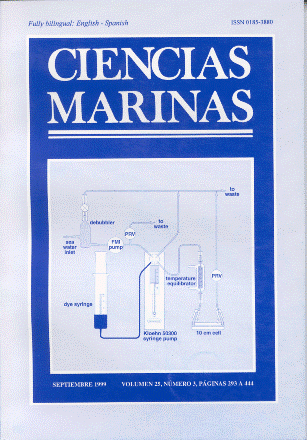Linear alkylbenzene sulfonates (LAS) as tracers of urban waste waters in shallow littoral ecosystems: A case study in the Bay of Cádiz
Main Article Content
Abstract
The spatial distribution of linear alkylbenzene sulfonates (LAS) and their composition of homologues in sediments of Cádiz Bay, a semienclosed system surrounded by urbanized areas, has been studied. LAS homologues were measured in marine sediments using solid-phase extraction and reversed-phase high-perfomance liquid chromatography with spectrofluorimetric detection. Results showed that LAS, principally associated with solids in suspension and originating from the existing outlet where urban waste waters are discharged into the Sancti Petri Channel, are transported to Cádiz Bay during the ebb tide or emptying phase. The transport of solids in suspension is defined by the circulation of tidal currents and its sedimentation will be encouraged in those zones where the water has a long residence time, zones of low energy, where the accumulation of the surfactant takes place. These results enable the area of influence of the urban waste water discharge to be determined. The distribution of the various LAS homologues in the sediment samples is different from that of the commercial LAS. The greater the distance from the discharge point, the smaller the quantities of the long-chain homologues.
Downloads
Article Details
This is an open access article distributed under a Creative Commons Attribution 4.0 License, which allows you to share and adapt the work, as long as you give appropriate credit to the original author(s) and the source, provide a link to the Creative Commons license, and indicate if changes were made. Figures, tables and other elements in the article are included in the article’s CC BY 4.0 license, unless otherwise indicated. The journal title is protected by copyrights and not subject to this license. Full license deed can be viewed here.

